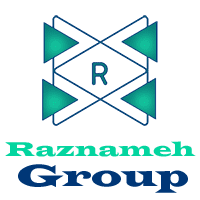1. Introduction
The psychology industry is in the midst of a profound transformation driven by digitization. The fusion of technology and mental health services is not just about convenience—it is a game-changer for operational efficiency, revenue growth, and the overall enhancement of psychologist clinics.
This article delves deep into how digitization is revolutionizing the mental health industry, offering actionable tips for clinics to harness these benefits.
2. The Current State of Psychologist Clinics
Historically, psychologist clinics have relied on traditional methods—paper-based records, in-person consultations, and manual billing. While these methods have been effective for decades, they come with inherent inefficiencies.
In a world where technology is reshaping every industry, psychology clinics that embrace digital tools are poised to thrive.
3. Statistics and Industry Trends
- Market Growth: The global digital mental health market is expected to reach $537 billion by 2030, growing at a compound annual growth rate (CAGR) of 29.3% .
- Teletherapy Boom: A survey by the American Psychological Association (APA) revealed that 76% of psychologists are now providing online therapy, up from 17% pre-pandemic.
- Patient Demand: 60% of patients prefer digital tools for scheduling, communication, and access to treatment records .
4. Digitization as a Catalyst for Operational Efficiency
The integration of digital tools in psychologist clinics has created new opportunities to streamline day-to-day operations. One of the most significant changes is the shift from paper-based records to Electronic Health Records (EHRs). This transition not only reduces the physical space needed for storing patient files but also enhances the speed and accuracy of data retrieval. EHRs allow for real-time updates, ensuring that patient information is always up-to-date and accessible to authorized personnel.
Automated scheduling systems also play a critical role in enhancing efficiency. By allowing patients to book appointments online, these systems reduce the administrative burden on clinic staff and minimize the likelihood of scheduling conflicts. Moreover, the integration of automated reminders via email or SMS can decrease the number of missed appointments, ensuring that psychologists’ time is utilized to its full potential.
Another aspect of digitization that improves efficiency is the automation of billing and payment processes. Digital billing systems reduce the time and effort required for manual invoicing, thereby cutting down on errors and ensuring that payments are processed quickly. Additionally, the integration of online payment options offers convenience to patients, which can lead to faster payment cycles and improved cash flow for clinics.
Digital tools also contribute to better time management within the clinic. By automating repetitive tasks such as appointment confirmations, payment reminders, and even patient follow-ups, staff can focus on more critical aspects of clinic operations. This shift not only improves the overall productivity of the clinic but also enhances the patient experience by ensuring that their needs are met efficiently and promptly.
5. Enhancing Communication and Patient Engagement Through Digital Channels
Effective communication is a cornerstone of any successful healthcare practice, and psychologist clinics are no exception. The advent of teletherapy platforms has revolutionized the way psychologists interact with their patients. Teletherapy breaks down geographical barriers, allowing clinics to extend their services to a broader audience, including those who may not have access to in-person care. This expansion not only increases the clinic’s reach but also contributes to higher patient satisfaction by offering flexible scheduling options.
Secure messaging platforms further enhance communication by enabling continuous engagement between psychologists and patients. These platforms allow patients to ask questions, seek guidance, and receive support between sessions. This ongoing communication helps build stronger relationships between psychologists and their patients, which can lead to better treatment outcomes.
In addition to improving communication, digital tools also allow clinics to offer more personalized services. For example, patient portals provide a centralized platform where patients can access their medical records, treatment plans, and appointment schedules. This level of transparency empowers patients to take a more active role in their mental health care, leading to greater engagement and adherence to treatment plans.
Furthermore, digital tools can be used to gather and analyze patient feedback more effectively. Online surveys and feedback forms allow clinics to collect real-time data on patient satisfaction, which can be used to identify areas for improvement. By addressing patient concerns promptly and efficiently, clinics can enhance the overall patient experience and build a loyal client base.
6. Expanding Revenue Streams Through Digital Innovation
Digitization not only streamlines operations and improves patient engagement but also opens up new avenues for revenue growth. One of the most significant ways clinics can increase revenue is through teletherapy. By offering online therapy sessions, clinics can attract clients from outside their local area, effectively expanding their market. This geographical flexibility allows clinics to serve a more diverse clientele and fill appointment slots that might otherwise go unused.
In addition to teletherapy, clinics can also explore other digital revenue streams, such as online courses and workshops. These offerings allow psychologists to share their expertise with a broader audience while generating additional income. For example, a psychologist might create an online course on managing anxiety or offer a workshop on mindfulness techniques. These digital products can be marketed to existing clients and a wider audience through the clinic’s website and social media channels.
Subscription-based services are another way to diversify revenue streams. Clinics can offer ongoing support or exclusive content to patients who subscribe to a monthly or annual plan. This model provides a steady stream of income and fosters long-term relationships with patients. For example, a clinic might offer a subscription service that includes regular check-ins, access to exclusive webinars, or personalized mental health resources.
Data-driven decision-making also plays a crucial role in revenue growth. By leveraging analytics tools, clinics can gain insights into their financial performance, patient demographics, and treatment outcomes. This data can be used to identify profitable services, optimize pricing strategies, and develop targeted marketing campaigns. For example, if a clinic notices that a particular service is in high demand, it can allocate more resources to that area or develop new offerings that cater to similar needs.
Another revenue-generating strategy involves partnering with insurance companies to offer covered services. By ensuring that their services are reimbursable under various insurance plans, clinics can attract more clients who might otherwise be unable to afford care. This approach not only increases patient access to mental health services but also boosts the clinic’s bottom line.
7. Improving Patient Outcomes with Personalized Treatment Plans
One of the most promising aspects of digitization in psychologist clinics is the potential to improve patient outcomes through personalized treatment plans. Advances in artificial intelligence (AI) and machine learning enable clinics to analyze large amounts of patient data and develop customized treatment strategies. For example, AI can help identify patterns in a patient’s symptoms, predict treatment responses, and recommend adjustments to therapy plans.
Personalized treatment plans can also be enhanced through the use of digital tools such as mobile apps. These apps allow patients to track their progress, complete mental health exercises, and access therapeutic resources between sessions. For instance, a mobile app might include a daily mood tracker, guided meditation exercises, or cognitive-behavioral therapy (CBT) tools. By incorporating these digital resources into their treatment plans, psychologists can provide continuous support to their patients and help them stay on track with their mental health goals.
Moreover, digital tools facilitate the monitoring of patient progress over time. For example, clinicians can use software to track a patient’s adherence to treatment, assess changes in symptoms, and adjust the treatment plan as needed. This data-driven approach allows psychologists to make more informed decisions and tailor their interventions to each patient’s unique needs.
Additionally, digital platforms enable clinics to offer more flexible and responsive care. For example, a psychologist might use teletherapy for regular sessions and supplement it with brief check-ins via a messaging platform. This approach allows for timely adjustments to the treatment plan based on the patient’s current needs, which can lead to better outcomes and higher patient satisfaction.
8. Leveraging Digital Marketing for Clinic Growth
In today’s competitive healthcare landscape, effective marketing is essential for attracting and retaining patients. Digitization offers psychologist clinics new opportunities to reach potential clients and build their brand. One of the most effective ways to do this is through digital marketing strategies such as search engine optimization (SEO), social media marketing, and email campaigns.
SEO is a critical component of digital marketing that helps clinics appear at the top of search engine results when potential clients search for mental health services. By optimizing their website content with relevant keywords, clinics can attract more organic traffic and increase their online visibility. For example, a clinic that specializes in anxiety treatment might optimize its website for keywords such as “anxiety therapy” or “anxiety treatment near me.”
Social media platforms also offer a powerful way to connect with potential clients and build a community around the clinic’s brand. By sharing valuable content, such as mental health tips, success stories, and clinic updates, psychologists can engage with their audience and establish themselves as trusted authorities in their field. Additionally, social media ads can be used to target specific demographics, ensuring that the clinic’s marketing efforts reach the right people.
Email marketing is another effective way to nurture relationships with existing clients and keep them engaged with the clinic. Regular newsletters can provide valuable information, such as new services, upcoming events, or mental health resources. Personalized email campaigns can also be used to follow up with clients who have expressed interest in specific services or remind them of upcoming appointments.
Another digital marketing strategy involves creating valuable content that positions the clinic as a thought leader in the mental health industry. For example, clinics can publish blog posts, videos, or podcasts that address common mental health concerns, share insights on new treatment methods, or offer practical advice for managing stress and anxiety. This content can be shared across the clinic’s website, social media platforms, and email newsletters to attract and engage a broader audience.
9. Enhancing Patient Access and Convenience
One of the most significant benefits of digitization in psychologist clinics is the increased accessibility and convenience it offers to patients. Digital tools make it easier for patients to access mental health services, whether through teletherapy, online booking, or mobile apps. This accessibility is particularly important for individuals who may face barriers to traditional in-person therapy, such as those living in remote areas or with mobility issues.
Online booking systems allow patients to schedule appointments at their convenience, without the need for phone calls or office visits. This flexibility can be especially appealing to busy professionals or individuals with unpredictable schedules. Additionally, many online booking platforms offer features such as appointment reminders and waitlist management, ensuring that patients can easily find and book available slots.
Teletherapy is another critical component of patient accessibility. By offering virtual therapy sessions, clinics can reach clients who may not be able to attend in-person appointments due to distance, time constraints, or health concerns. Teletherapy also provides a more comfortable and familiar environment for some patients, which can lead to better engagement and outcomes.
Mobile apps further enhance accessibility by putting mental health resources at patients’ fingertips. These apps can offer a range of features, from mood tracking and journaling to guided therapy exercises and meditation. By providing continuous support and resources, mobile apps help patients stay engaged with their mental health care between sessions, leading to better long-term outcomes.
Moreover, digital platforms can improve access to specialized care. For example, patients with specific mental health needs, such as trauma recovery or eating disorder treatment, can connect with specialists through teletherapy or online communities. This expanded access ensures that patients receive the most appropriate care for their unique needs, regardless of their location.
10. Ensuring Security and Compliance in Digital Transformation
As psychologist clinics adopt digital tools, ensuring the security of patient data and compliance with regulations such as HIPAA (Health Insurance Portability and Accountability Act) becomes paramount. Digital transformation requires clinics to implement robust security measures to protect sensitive information from breaches and unauthorized access.
One of the key aspects of maintaining security in a digital environment is the use of encryption. By encrypting patient data both in transit and at rest, clinics can safeguard information from potential cyber threats. Additionally, secure access controls, such as multi-factor authentication and role-based permissions, help ensure that only authorized personnel can access sensitive data.
HIPAA compliance is a critical consideration for any clinic that handles patient information. This federal law sets strict standards for the privacy and security of health information, and non-compliance can result in significant penalties. To ensure compliance, clinics must implement comprehensive policies and procedures for handling patient data, including regular security audits, staff training, and breach notification protocols.
Another important aspect of digital security is the use of secure teletherapy platforms. These platforms must be HIPAA-compliant, meaning they meet the necessary security standards to protect patient confidentiality. Clinics should carefully evaluate teletherapy providers to ensure they offer the required security features, such as end-to-end encryption and secure data storage.
Data backup and recovery plans are also essential for maintaining security in a digital clinic. In the event of a system failure or cyberattack, having a reliable backup system in place ensures that patient data can be quickly restored without significant disruption to services. Regular backups, combined with secure cloud storage, can provide peace of mind that critical information is protected.
Finally, clinics must stay informed about evolving cybersecurity threats and continuously update their security measures accordingly. This proactive approach to security ensures that clinics can adapt to new challenges and maintain the trust of their patients.
11. Conclusion
Digitization is more than just a trend—it’s a necessary evolution for psychologist clinics aiming to enhance efficiency, drive revenue growth, and improve patient experiences. By embracing digital tools, clinics can streamline operations, expand their reach, and provide better care. As the mental health industry continues to evolve, those who adopt and adapt to these technological advancements will lead the way in delivering high-quality psychological services.
Written by Epimaco Diaz















